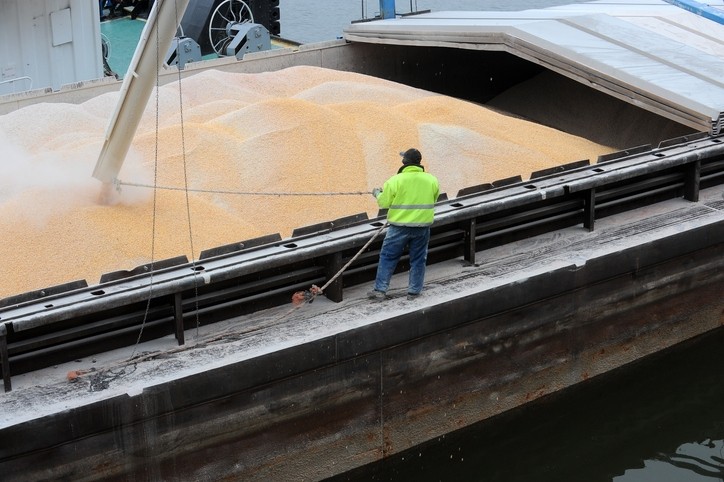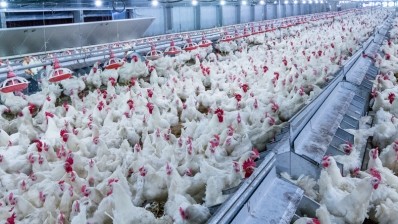Argentina: policy shifts boost early feed grain exports

The US Department of Agriculture (USDA) released details of feed and grain sales, use and production in Argentina on Friday [January 24] in a new report from the Foreign Agricultural Service (FAS).
Overall, a change in government policy that increased export taxes on agricultural products from 6.7% to 12% spurred forward sales of feed grains for the 2019/20 marketing year, reported the agency.
“Prior to the new administration taking office in December 2019 farmers engaged in aggressive future grain sales for the 19/20 crop (which began with the wheat harvest in December 2019) to avoid anticipated increases in their tax burden,” the FAS reported. “By the first week of December 2019, farmers had sold not only wheat but also corn and soybeans in a volume that exceeded 19m tons more compared to the same week a year ago.”
Strong global prices for agricultural products have helped mitigate some of the negative effects of the additional export tax, the agency said. However, new currency controls have been put in place, which makes changing grain into dollars more expensive.
The change in tax policy supported an anticipated record corn export of 38m tons, the FAS said. However, domestic corn use in marketing years (MY) 2018/19 and for 2019/20 is anticipated to decline from previous estimates.
Government policy and sales influence
“Since the December 2019 inauguration of President Alberto Fernandez, a return to reliance on interventionist trade policies to raise fiscal revenue has impacted the agricultural sector,” the FAS said. An initial step was to increase export taxes.
On December 14, the government implemented measures to end a $4 pesos per US dollar cap on export taxes, the agency said. That move raised taxes on all grains to 12%.
“In late December, Congress passed Law 27,541 ‘Social Solidarity and Productive Reactivation’ in which the government gained authorization to increase export taxes, including on grains, up to 15% which, so far, has not been implemented,” the agency added.
Corn and barley considerations
Corn production is anticipated to be down to about 48m tons based on reduced acreage and yields for MY 2019/20, the FAS said.
“Following an unexpected primary election defeat in August 2019 by former President Macri, farmers changed planting intentions for 200-400,000 hectares from corn to soybeans in anticipation of a regime change,” the agency said. “Industry reports the harvested area of commercial corn will be close to 6m hectares.”
Domestic use of corn is expected to fall to 13.4m tons, the agency said. In MY 2018/19 total consumption was about 13m tons.
However, poultry, egg, dairy and pork industries are expected to see an increase in 2020 based on increased domestic consumption and strong export demand, the agency said.
“Exporters have purchased and declared shipments for the MY 19/20 (beginning in March 2020) for 18m tons, almost 12m tons more than a year ago,” the FAS said. “Both farmers and exporters advanced contracts to avoid the payment of higher export taxes expected in mid-December 2019.”
During peak harvest – from March to June – Argentina tends to be competitive in the global market and corn exports for MY 2018/19 are anticipated to reach 38m tons, the agency said. Exports from March to December 2019 are expected to be 34m tons with an additional 2m in January and February 2020.
Increased exports are anticipated to reduce ending stocks to 2.4m tons by February 2020, the agency said.
Barley production during MY 2019/20 is expected to drop about 800,000 tons to a total of 3.9m tons based on drought conditions and reduced harvest, the FAS said.
Exports in MY 2019/20 are predicted to reach 2.4m tons, the agency said. “Brokers indicate that roughly 1.2m tons of malting barley will be exported primarily to other South America markets with another 1.2m tons of feed barley exported primarily to Saudi Arabia.”
“Exporters report that a large volume of Argentine barley will likely fill a November 2019 Saudi Arabian tender for 1m tons of feed barley for delivery in February and March 2020,” the agency added. “Through the first week of 2020, exporters purchase of 950,000 tons of barley was 70 percent feed barley. Export declarations totaled 1.5m tons.”
Domestic use of feed barley in 2019/20 is anticipated to reach 400,000 tons, up about 100,000 from the previous marketing year, the agency reported.
Wheat production and exports
Wheat production for 2019/20 is expected to increase to 19.3m tons, the FAS said. Initial dry weather and frosts lowered past projections for the crop, but spring rain helped develop the wheat crop into the harvest period.
“High levels of technology and appropriate levels of fertilization for the crop resulted in good protein quality for positive commercialization in both domestic and export markets,” the agency said.
Wheat exports in MY 2019/20 are anticipated to be about 13m tons, the agency said.
“Through January 8, 2020, the Argentine Ministry of Agriculture indicated that exporters have purchased 13.4m tons and have declared sales for 12m tons in aggressive buying to lock in prices before an expected hike in export taxes,” the FAS reported. “Shipments in December totaled approximately 2m tons, with Brazil accounting for 660,000 tons, Indonesia 400,000 tons with other destination markets including countries in Africa, South East Asia and South America.”
Exports in January are estimated to add about 3m tons – predominantly to Indonesia – while February and March may add an additional 4m tons to export amounts, the agency said.















